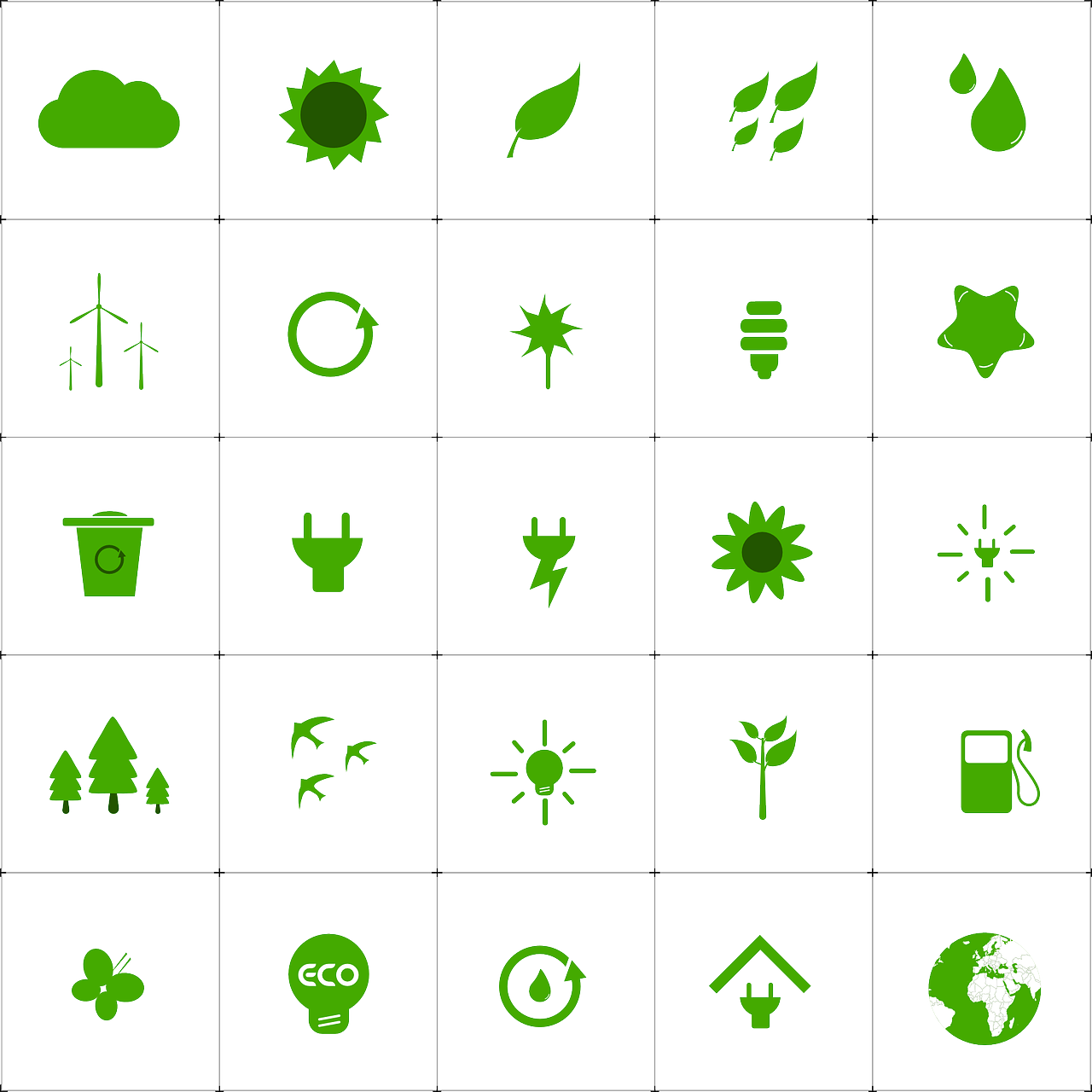In today’s rapidly evolving business landscape, companies are increasingly recognizing the importance of incorporating sustainable practices into their operations. Alongside environmental initiatives, offering eco-friendly employee benefits has become a crucial aspect of a company’s corporate social responsibility. By providing environmentally conscious perks and incentives, such as flexible work hours, telecommuting options, and wellness programs, businesses not only attract top talent but also foster a culture of environmental stewardship. These eco-friendly employee benefits demonstrate a commitment to sustainability, contribute to a positive brand image, and ultimately drive business success. This article explores the significance of eco-friendly employee benefits and provides practical insights for businesses looking to implement them successfully.

Reducing Carbon Footprint
Promoting Sustainable Transportation Options
Promoting sustainable transportation options is a key step in reducing the carbon footprint of a company. By encouraging employees to choose greener modes of transportation, such as biking, walking, and using public transit, businesses can significantly reduce the emissions caused by daily commuting. Offering incentives such as subsidized public transit passes or bike-sharing programs can make these options more appealing to employees, further encouraging their adoption. By promoting sustainable transportation options, companies can not only reduce their carbon footprint but also contribute to cleaner and healthier communities.
Encouraging Telecommuting
Telecommuting, or working from home, is another effective way to reduce carbon emissions and promote sustainability. Allowing employees to work remotely eliminates the need for daily commuting, reducing the carbon footprint associated with transportation. Telecommuting also offers numerous benefits for both employees and employers, including increased productivity, cost savings, and improved work-life balance. By implementing telecommuting policies, businesses can not only reduce their environmental impact but also attract and retain top talent by offering flexible work options.
Implementing Carpooling Programs
Carpooling programs are a great way to reduce the number of vehicles on the road and minimize carbon emissions. By encouraging employees to share rides to and from work, businesses can significantly decrease the environmental impact of commuting. Implementing carpooling programs can be as simple as creating a database or platform where employees can connect with others who live in the same area and are interested in carpooling. Offering incentives, such as designated parking spots for carpoolers or carpool-only lanes near the workplace, can also motivate employees to participate in these programs. By implementing carpooling initiatives, companies can foster a sense of community among employees while making a positive impact on the environment.
Sustainable Workspace
Green Building Initiatives
Creating a sustainable workspace begins with implementing green building initiatives. Building or retrofitting office spaces with eco-friendly materials and technologies can have a significant impact on reducing environmental harm. This can include using energy-efficient lighting and HVAC systems, installing low-flow water fixtures, and incorporating natural lighting and ventilation. Furthermore, constructing or renovating office spaces to meet green building certifications, such as LEED (Leadership in Energy and Environmental Design), showcases a commitment to sustainability and can attract environmentally-conscious clients and customers.
Energy-efficient Technology
Investing in energy-efficient technology is another effective way to create a sustainable workspace. This includes using energy-efficient computers, monitors, printers, and other office equipment. Adopting power management systems that automatically turn off devices when not in use can also help reduce energy consumption. Additionally, installing smart thermostats and lighting systems that optimize energy usage based on occupancy can further enhance energy efficiency in the workplace. By prioritizing energy-efficient technology, businesses can lower their energy costs and reduce their carbon footprint.
Waste Reduction and Recycling
Implementing waste reduction and recycling programs is essential for creating an eco-conscious workspace. Encouraging employees to recycle paper, plastics, glass, and other materials can divert significant amounts of waste from landfills. Providing designated recycling bins throughout the office and offering educational programs to raise awareness about recycling best practices are instrumental in achieving high recycling rates. Additionally, businesses can reduce waste by introducing policies that promote paperless operations, such as electronic document management systems and digital communication tools. By prioritizing waste reduction and recycling, companies can demonstrate their commitment to environmental stewardship and contribute to a circular economy.
Eco-conscious Healthcare
Eco-friendly Health Insurance
Offering eco-friendly health insurance plans is a unique way for businesses to support employees’ well-being while also promoting sustainability. Eco-friendly health insurance plans prioritize coverage for green medical treatments, such as naturopathy, acupuncture, and herbal medicine. These plans may also include coverage for alternative therapies that focus on holistic healing and environmental sustainability. By providing eco-friendly health insurance options, businesses can show their commitment to employee well-being and offer a comprehensive approach to healthcare that aligns with their sustainability goals.
Wellness Programs with Environmental Approach
Wellness programs that incorporate an environmental approach can have a positive impact on both the health of employees and the environment. These programs can include activities such as yoga or meditation classes held in outdoor settings, nature walks or hikes, and gardening workshops. By incorporating nature and the environment into wellness programs, businesses can promote physical and mental well-being while fostering a connection to nature. This approach not only benefits individual employees but can also cultivate a culture of sustainability within the workplace.
Access to Alternative Medicine
Allowing employees access to alternative medicine options can be an effective way to promote eco-conscious healthcare. Alternative medicine practices, such as herbal remedies, acupuncture, and chiropractic care, often prioritize natural healing methods and minimize the use of pharmaceuticals and invasive procedures. By including alternative medicine coverage in employee health benefits, businesses can support sustainable healthcare practices and provide employees with a broader range of treatment options. This approach aligns with a holistic and environmentally-conscious approach to employee well-being.
Environmentally-friendly Initiatives
Investing in Renewable Energy
Investing in renewable energy is a significant step towards reducing a company’s carbon footprint and supporting clean energy sources. By installing solar panels or wind turbines on company premises or purchasing renewable energy credits, businesses can actively contribute to the transition to a low-carbon economy. Investing in renewable energy not only reduces reliance on fossil fuels but also demonstrates a commitment to sustainability and environmental stewardship.
Participating in Carbon Offset Programs
Participating in carbon offset programs is another environmentally-friendly initiative businesses can undertake. Carbon offsetting involves investing in projects that reduce or remove greenhouse gas emissions, such as reforestation or renewable energy projects. By voluntarily offsetting their own carbon emissions, companies can mitigate their environmental impact and take responsibility for their contribution to climate change. Participating in carbon offset programs provides businesses with a tangible way to offset their emissions and support projects that have a positive environmental impact.
Supporting Environmental Non-profits
Supporting environmental non-profit organizations is a way for businesses to make a difference and show their commitment to sustainability. This can involve corporate donations or sponsorships to organizations focused on conservation, environmental advocacy, or sustainable development. By partnering with environmental non-profits, companies can contribute to initiatives that protect ecosystems, promote biodiversity, and support sustainable practices. Supporting environmental non-profits not only benefits the planet but also enhances a company’s reputation as a responsible corporate citizen.

Flexible Work Schedules
Reducing Commute Times
Implementing flexible work schedules can significantly reduce the time employees spend commuting, thereby minimizing carbon emissions. By allowing employees to have flexible start and end times or the option to work condensed workweeks, businesses can help optimize commuting schedules and reduce peak-hour congestion. This can lead to shorter commute times, lower fuel consumption, and decreased carbon emissions. Implementing flexible work schedules not only benefits the environment but also improves employee satisfaction and work-life balance.
Increasing Work-life Balance
Flexible work schedules also contribute to increased work-life balance, a key factor in employee well-being and job satisfaction. By providing employees with the flexibility to manage their work hours and personal commitments, businesses can help alleviate stress and improve overall quality of life. Increased work-life balance can lead to higher employee morale, productivity, and retention rates. By prioritizing work-life balance through flexible work schedules, businesses can attract and retain top talent while promoting sustainable work practices.
Improving Employee Productivity
Flexible work schedules have been shown to improve employee productivity. When employees have the ability to work during their most productive hours or from locations that suit their needs, they are likely to be more focused and efficient. This increased productivity can result in better outcomes for businesses, as well as reduced time spent on non-essential tasks. By embracing flexible work schedules, companies can enhance employee productivity while reducing their carbon footprint.
Sustainable Food Options
Providing Plant-based Meal Options
Offering plant-based meal options is a sustainable food choice that businesses can incorporate into their workplace. Plant-based diets have been shown to have a lower carbon footprint compared to diets rich in animal products. By providing delicious and nutritious plant-based meal options in company cafeterias or during corporate events, businesses can encourage employees to make more sustainable food choices. Additionally, promoting plant-based meals can contribute to improved employee health and well-being.
Supporting Local and Organic Food Sources
Supporting local and organic food sources is another important aspect of sustainable food options. By sourcing food locally, businesses can reduce the carbon emissions associated with long-distance transportation and support local farmers and producers. Additionally, prioritizing organic food sources helps reduce the use of synthetic pesticides and fertilizers, promoting a healthier and more sustainable food system. By supporting local and organic food sources, companies can demonstrate their commitment to sustainable practices and contribute to a more resilient food system.
Reducing Food Waste
Food waste is a significant environmental issue, contributing to greenhouse gas emissions and diverting resources from more productive uses. Implementing strategies to reduce food waste, such as proper meal planning, portion control, and composting programs, can significantly minimize the environmental impact of food consumption. Businesses can work with their catering providers or cafeteria staff to implement waste reduction practices, educate employees about the importance of food waste reduction, and track and analyze food waste data to identify areas for improvement. By focusing on reducing food waste, companies can contribute to a more sustainable food system and reduce their environmental footprint.
Green Team and Employee Engagement
Creating Green Committees
Creating green committees within organizations is an effective way to engage employees in sustainability initiatives. Green committees are groups of employees dedicated to driving environmental initiatives and fostering sustainable practices within the workplace. These committees can organize educational campaigns, implement sustainability programs, and provide guidance on eco-friendly practices. By involving employees in green committees, businesses can tap into the collective creativity and knowledge of their workforce and create a sense of ownership and pride in sustainability efforts.
Organizing Sustainability Events
Organizing sustainability events is another way to engage employees and raise awareness about environmental issues. This can include hosting eco-fairs or green expos where employees can learn about sustainable products and services. Companies can also organize awareness campaigns and workshops on topics such as energy conservation, waste reduction, and green commuting. By organizing sustainability events, businesses can create a culture of sustainability and encourage employees to incorporate eco-friendly practices into their personal and professional lives.
Encouraging Employee Involvement
Encouraging employee involvement and participation in sustainability initiatives is crucial to creating a sustainable workplace. By providing opportunities for employees to contribute their ideas, expertise, and creativity, businesses can harness the potential for innovative solutions. This can include soliciting employee input on sustainability goals and action plans, recognizing and rewarding environmentally-friendly behaviors, and offering incentives for employees who actively engage in sustainability efforts. By actively involving employees in sustainability initiatives, companies can foster a sense of ownership and collective responsibility towards environmental sustainability.
Workplace Wellness Programs
Implementing Eco-friendly Fitness Programs
Incorporating eco-friendly fitness programs into workplace wellness initiatives is a great way to promote employee health and environmental sustainability. This can include offering fitness classes that take place outdoors, utilizing natural elements such as parks or trails for workouts, or providing incentives for employees to exercise outside of the office. By combining fitness and environmental consciousness, businesses can encourage healthy habits while minimizing their carbon footprint.
Promoting Mental and Emotional Well-being
Promoting mental and emotional well-being is a critical component of workplace wellness programs. By offering resources and support for stress management, mindfulness, and work-life balance, businesses can create a healthier and more productive work environment. This can include providing access to counseling services, promoting mental health awareness campaigns, and incorporating relaxation or meditation spaces in the workplace. By prioritizing mental and emotional well-being, companies can enhance employee satisfaction and overall wellness.
Encouraging Healthy Eating Habits
Encouraging healthy eating habits is another essential aspect of workplace wellness programs. By offering nutritious snacks, providing access to healthy food options in company cafeterias, and educating employees about the benefits of balanced diets, businesses can help foster healthier eating habits. Additionally, companies can organize workshops or cooking classes that promote healthy eating and provide employees with the knowledge and skills to make informed food choices. By prioritizing healthy eating, businesses can contribute to a healthier workforce and lower healthcare costs.

Educational Opportunities
Training and Workshops on Environmental Issues
Providing training and workshops on environmental issues is crucial for creating an environmentally-conscious workplace. By offering educational opportunities on topics such as climate change, sustainability, and energy conservation, businesses can raise awareness and empower employees to take action. Workshops can cover a range of topics, from understanding the carbon footprint of daily activities to learning about sustainable practices in specific industries. By investing in employee education and knowledge, companies can create a culture of sustainability and equip employees with the tools to make environmentally-friendly choices.
Providing Continuing Education in Sustainability
Continuing education programs in sustainability provide employees with ongoing opportunities to deepen their knowledge and skills in environmental stewardship. This can include courses or certifications in sustainable business practices, renewable energy technologies, or green building design. By supporting employees’ professional development in sustainability, businesses can cultivate a workforce that is well-equipped to drive sustainable change within the organization and contribute positively to the environment.
Seminars on Climate Change and Conservation
Seminars on climate change and conservation are a valuable way to educate employees about pressing environmental issues and inspire action. Experts in the field can be invited to share their insights on topics such as climate change mitigation, biodiversity conservation, and sustainable resource management. These seminars can also provide opportunities for employees to learn about innovative solutions and technologies that can help address environmental challenges. By organizing seminars on climate change and conservation, businesses can foster a culture of environmental awareness and empower employees to make a difference.
Employee Volunteering
Participating in Conservation and Cleanup Projects
Participating in conservation and cleanup projects is a meaningful way for businesses to engage in environmental stewardship and give back to their communities. This can involve organizing company-wide volunteer events to clean up local parks or beaches, participate in reforestation efforts, or restore natural habitats. By actively participating in conservation and cleanup projects, companies can demonstrate their commitment to environmental sustainability and inspire employees to take action in their personal lives.
Partnering with Environmental Organizations
Partnering with environmental organizations is a strategic way for businesses to amplify their impact and support broader conservation efforts. By collaborating with reputable non-profit organizations focused on environmental protection, businesses can leverage their resources and expertise to drive meaningful change. Partnerships can involve financial contributions, volunteering opportunities, or joint initiatives aimed at addressing specific environmental challenges. By partnering with environmental organizations, businesses can demonstrate their commitment to corporate social responsibility and contribute to the preservation of our planet.
Volunteering for Community Gardens
Volunteering for community gardens is an excellent way for businesses to promote sustainable food production and support local communities. Employees can participate in gardening activities, such as planting, weeding, or harvesting, and contribute to the development of community green spaces. Volunteering for community gardens not only helps strengthen community bonds but also provides opportunities for employees to learn about sustainable gardening practices and the importance of local food systems. By engaging in community garden projects, businesses can foster a sense of environmental responsibility and empower employees to make a positive impact.
Frequently Asked Questions (FAQs)
Q: How can implementing sustainable transportation options benefit my company?
A: Implementing sustainable transportation options can benefit your company in several ways. First, it reduces your carbon footprint, demonstrating your commitment to environmental stewardship. Second, it can lower transportation costs and provide potential tax incentives for promoting alternative forms of commuting. Third, it can improve employee satisfaction and attract talent who value sustainability. Overall, adopting sustainable transportation options can have positive impacts on the environment, your bottom line, and your reputation.
Q: How can my company reduce waste in the workplace?
A: You can reduce waste in the workplace by implementing waste reduction and recycling programs. Start by providing designated recycling bins throughout the office and educating employees about proper recycling practices. Additionally, encourage paperless operations through digital document management systems and utilize energy-efficient technologies to minimize electronic waste. Finally, consider composting programs for food waste or organizing donation drives to divert usable items from landfills.
Q: What are the benefits of offering eco-friendly health insurance?
A: Offering eco-friendly health insurance plans demonstrates your commitment to employee well-being and sustainability. These plans often prioritize coverage for green medical treatments, alternative therapies, and natural healing methods. By giving employees access to a broader range of healthcare options, you can support their holistic well-being and promote a healthier work environment. Furthermore, offering eco-friendly health insurance can enhance your employer brand and attract environmentally-conscious employees.
Q: How can flexible work schedules improve employee productivity?
A: Flexible work schedules can improve employee productivity by allowing individuals to work during their most productive hours and in environments where they can focus best. By providing employees with the flexibility to balance work and personal commitments, they can better manage their energy and avoid burnout. This increased autonomy and work-life balance can boost motivation, job satisfaction, and ultimately lead to improved productivity and outcomes for your company.
Q: What are the benefits of incorporating sustainability into workplace wellness programs?
A: Incorporating sustainability into workplace wellness programs offers numerous benefits. First, it demonstrates your commitment to environmental sustainability, which can attract and retain environmentally-conscious employees. Second, it encourages healthier habits by promoting eco-friendly fitness programs and offering plant-based meal options. Third, it fosters a culture of sustainability among your workforce, leading to increased employee engagement and satisfaction. By integrating sustainability into wellness programs, you can enhance both employee well-being and your company’s environmental impact.
- Disclaimer: The content provided in this article is for informational purposes only and does not constitute legal advice. For specific questions regarding eco-friendly employee benefits, please consult with a qualified attorney.
































